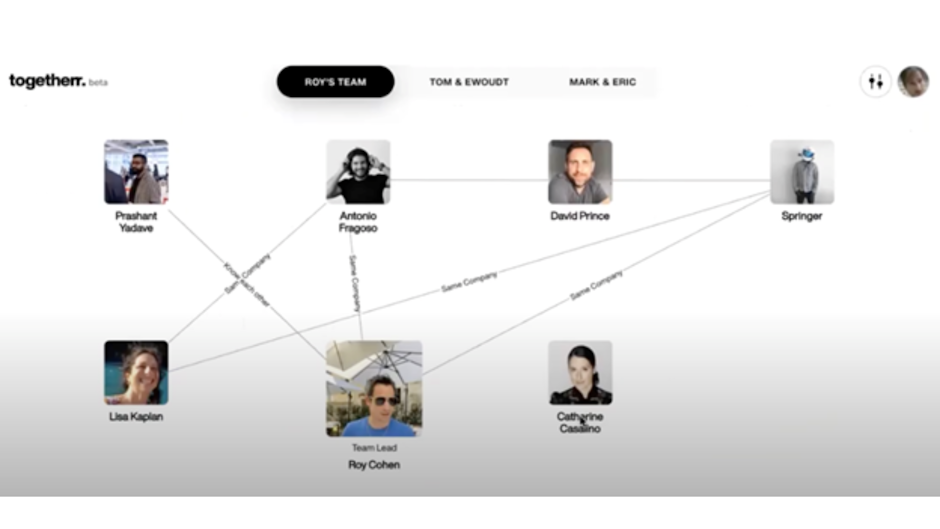In the rapidly evolving advertising landscape, marketers who act now will be the ones to unlock growth. To help you get started, Google brings you ‘Ready. Set. Grow’ – an essential series of resources to help you and your team navigate what you need to do, when and why.
Consumers are asking for more transparency and greater control over how their data is being used. Existing technologies like third-party cookies are being replaced by privacy-preserving ones. New regulations are either in active development or going into effect across the globe. These major industry shifts are happening in tandem with the acceleration of AI-powered technologies, unlocking new capabilities for marketers and opportunities to ‘do marketing differently’.
All of these things will further influence the way digital marketing works. It will change how marketers reach audiences online and measure their digital marketing activities with Google. Data and measurement are so critical to growth and if marketers don’t take the necessary action now to lay the foundations for durable measurement, they will risk rapidly losing performance.
“For a number of years, the industry narrative has focused on privacy recommendations and best practice but that was an unrealized performance gain; that action didn’t have any consequence,” explains Adam Taylor, UK privacy lead at Google. “2024 is the year where the rubber hits the road and action is required to prevent consequences. Those who are prepared are well positioned to get ahead, but for those who aren’t, it’s not too late to benefit from it.”
Three key milestones
Evolving privacy expectations, as well as new digital regulations, are changing how marketers reach audiences online and measure digital marketing activities with Google in 2024. Notably:
- Now: Important to implement consent mode to communicate consent signals to Google to maintain ad personalization features.
- July: Deadline for migration to Google Analytics 4 (GA4) – with certain advertising capabilities in Google’s UA360 service no longer supported from early March.
- H2 2024: The planned deprecation of third-party cookies on Chrome, subject to resolution of any remaining competition issues with the Competition and Markets Authority (CMA), requiring alternative solutions to maintain and improve the accuracy of conversion measurement.
Durable performance foundations
The secret to successful AI is derived from high quality, consented first-party data. “AI is only as strong as the quality of the data, the fuel, that powers it,” says Taylor. “Robust measurement is crucial to gain competitive advantage. Accurate data allows for confident decision making, which makes for effective campaigns and, ultimately, stronger growth.”
A lot of this is also good process management, adds Taylor, noting that if everything else is in order and you have your approvals and due diligence, each of these steps is relatively simple and straightforward to do. “By having the right processes in place, bringing internal stakeholders in early and leaning on the right partners for support, advertisers can lay the foundations now to build durable measurement that will ensure they avoid losing performance,” he says.
Taking a long-term view on privacy, Google has been evolving in line with user expectations and regulations by making multiple product upgrades to prepare for this future across both its web and app properties. To help marketers get ready, there are four important actions to focus on now – each of which is explored in more detail in the full Ready. Set. Grow series of resources:
- Collect valid user consent, respecting local market legal requirements and ensuring they are compliant with Google’s existing EU user consent policy. It’s also recommended to work with a consent management platform (CMP) who can support the banner and consent collection work or develop in-house solutions to collect users’ consent. For example, Google has partnerships in place with 15+ CMP partners (with more on the way) who – on top of supporting users’ consent collection – help share consent signals with Google.
- Implement / upgrade to consent mode v2 which communicates a user’s consent status to Google. From early March 2024, this upgrade will be required to preserve online audience functionalities with Google and consent mode makes it easy to ensure the status is passed to Google in the correct way. The two new parameters are:
> ad_user_data: sets consent for sending user data to Google for advertising purposes
> ad_personalization: sets consent for personalized advertising
- Migrate to Google Analytics 4 as soon as possible (if you haven’t already). This is the new version of Google Analytics that is AI-ready, cross-channel and cross-device, and built with privacy at its core. From early March 2024 certain advertising capabilities in the UA360 service will no longer be supported for affected traffic in the EEA. This means that marketers will not be able to export audiences and conversions from UA360 to Google Ads and Google marketing platforms for traffic in the EEA.
- Upgrade to the latest versions of Google Ads Platforms APIs and SDKs to pass user consent signals to Google. This sounds quite technical but don’t get put off by the jargon. This step is crucial for ensuring campaigns using Customer Match Lists can continue to deliver.
In addition to these immediate changes to help marketers get ready, other solutions such as implementing sitewide tagging and using Enhanced Conversions to improve the accuracy of conversion measurement will be key to help marketers get ready for the deprecation of third-party cookies later this year.
Responsible use of data
There is both an urgency here, and an opportunity to make longer term future-proof decisions to set your business up for success, Taylor explains, noting that these steps can be taken sequentially – but it needs to start now. “It’s readiness in the short-term by changing the way you work, but the organizational structure has also got to be there too in terms of processes, architecture and infrastructure.”
Each of these steps “further underlines the need to have all stakeholders in alignment and agreement,” adds Taylor. “That includes design, front end, product, legal and any privacy professionals working with the marketers’ data. They all have a vested interest in making sure this solution is done right. The data protection officer (DPO) is still going to be accountable, but the responsibility will be with all stakeholders.”
Advertisers who have already proactively adopted this approach and prioritized their privacy strategy have already seen substantial business benefits. Car Finance 247, for example, delivered 15.2% more paid search conversions via consent mode and a 7.5% increase in conversions driven by Enhanced Conversions, in a pilot test. The team is now able to better track application conversions – with the set-up now the standard across its search campaigns, helping optimize advertising expenditure and maximize ROI.
“Privacy-centric, first-party data as a standard is a reflection of digital maturity growth,” says Taylor. “Good data hygiene doesn’t happen by accident, it should become a routine, a process. This is ultimately what the regulators are seeking: to be more mature and responsible with data and for marketing to be more responsible. If we can demonstrate responsibility, it’s not a zero sum game. We’re all going to benefit from doing the right thing.”
It’s important for advertisers to have a clear roadmap, plan and timeline in place, with a clear set of actions and agreed owners. Adopting these four steps now will help marketers get ready and create durable foundations for future-proof advertising performance in 2024 and beyond.
To access the full Ready. Set. Grow series with a step by step guide to navigate and prepare for these changes, click here.











